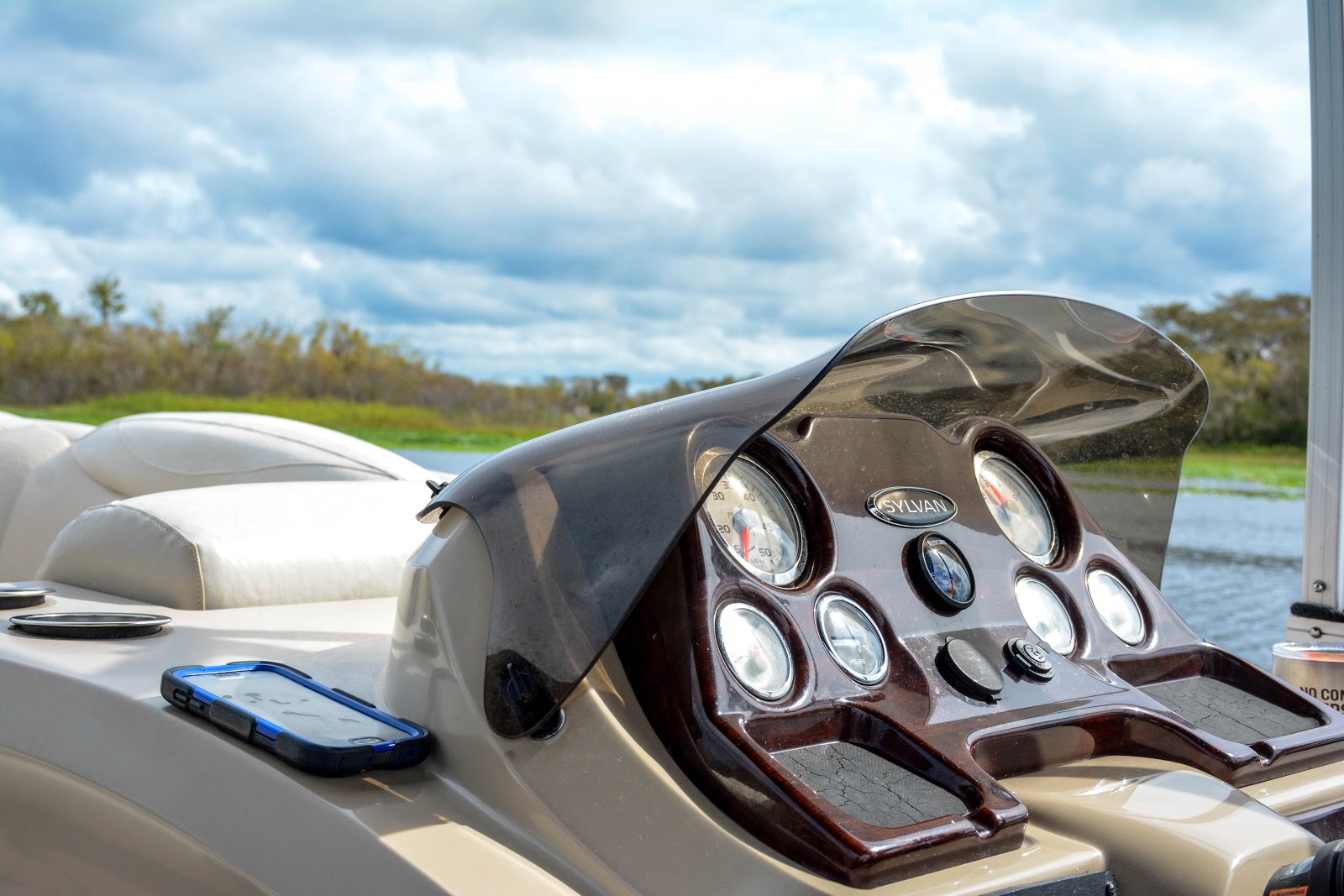How to Navigate the St. Johns River
The St. Johns River isn’t your typical Florida getaway, having many unique characteristics that make it a one-of-a-kind destination! Because of this diversity, it could be difficult to navigate the St. Johns River. Before you visit, learning how to navigate the St. Johns River will allow for a relaxing day on the water. Castaways on the River lies directly on this waterway and is the perfect location to rent a boat or enjoy the week in one of our cottages or motel rooms.
St. Johns River Fun Facts
Known as the “Bass Fishing Capital of the World,” the river is rich in marine life including ample crappie, bluegill, catfish and other varieties of freshwater fish. In addition, visitors enjoy swimming, kayaking and boating along the river’s connected watersheds during the spring and summer months.
The St. Johns River is also linked to 14 lakes and numerous Florida springs including Blue Spring State Park, a protected manatee refuge. During the winter season, hundreds of these gentle sea cows inhabit the spring’s surface much to the joy of onlookers. To read more, visit our blog, St. Johns River Fun Facts.
Tips to Navigate the St. Johns River
Cell Phone Navigation
Many people decide to go “unplugged” while out on the water, and with good reason! Since there’s limited cell phone service on the St. Johns River, your device may not be much use for navigation. Additionally, taking in the surrounding beauty is a nice reprieve before heading back to the digital world. For these reasons, we don’t recommend relying on cell phones for navigation. Instead, use your phone to take pictures of the surrounding nature and the beauty of the area! Be sure to tag us with the hashtag #CastawaysontheRiver when you share your photos, and you might win a t-shirt in our photo contest.
First, read the rules to make sure your photo entry counts.
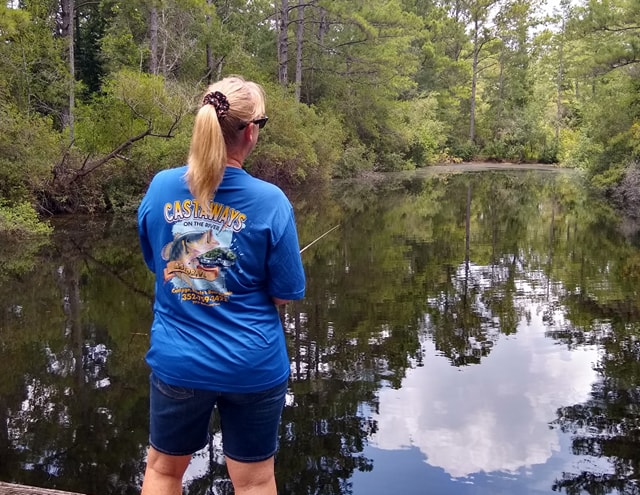
St. Johns River Markers and Signs
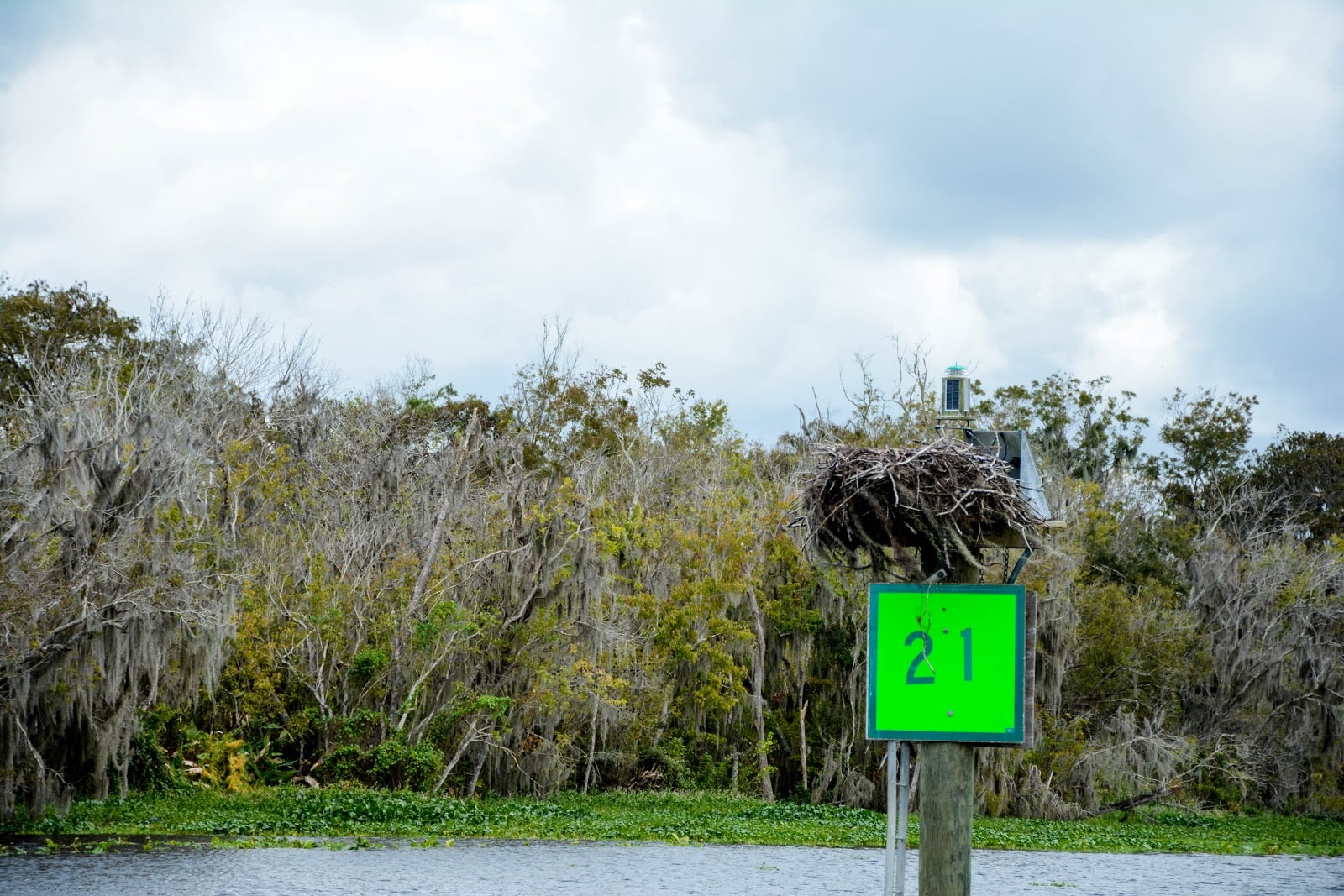
North of Castaways on the River lies Axle Creek, Hitchens Creek, Payne Creek, Silver Glen Springs and Lake George. To the south, look for Lake Dexter, Stagger Mud Lake, Tick Island Mud Lake, Lake Woodruff and channel marker #24. On the river, you’ll see channel markers referencing how far north or south you are, ensuring you stay within the boat’s boundaries. For instance, the northern boundary is a third into Lake George, just past Silver Glen Springs to the west while the eastern lake boundary lies a bit beyond Jones Cove. And finally, you’ll find the southwest boundary at channel marker #24 on the St. Johns River; visitors heading southeast should not wander beyond Lake Woodruff.
Here’s a visual map of Castaways on the River boundaries to view before you go exploring. These maps are also available in our office.
How to Read Your On-Boat Compass
All Castaways on the River boat rentals are equipped with a compass to help you navigate the river, lakes and springs. Here’s a great resource on how to read a compass, which will be helpful in situations where you have no phone or GPS. To navigate the St. Johns River, all you need is a compass and a map of the area!
You’ll find your onboard compass on the dashboard of the boat.
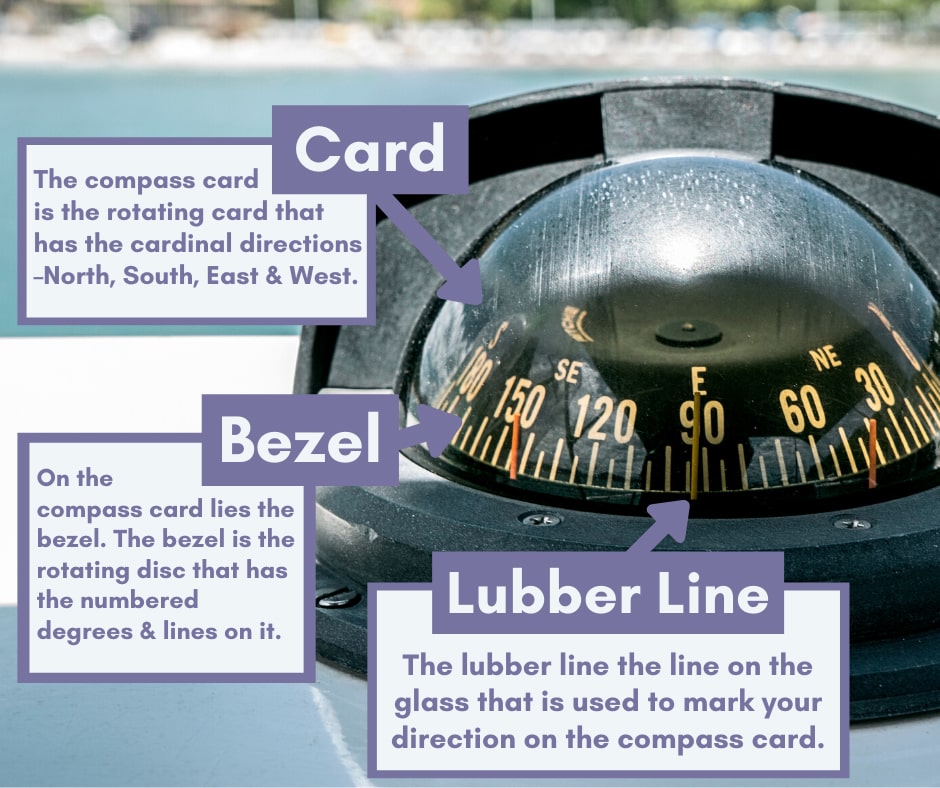
The lubber line shows you which direction you are going. To find which way you should return, just add 180 degrees to the lubber line number for your course home.
For newcomers, the website Improve Sailing has a great beginner’s guide on how to use a boat compass. For those looking to fine-tune their skills, boats.com has additional information that will definitely come in handy!
However, if you have any questions, we are here to help! Our office phone is 352-759-3422. Should you find yourself in a difficult situation, give us a call. Better yet, speak to our team before your trip for additional resources in planning the perfect outdoor excursion.
Boating Safety on the Water
Florida Boating Safety Laws
According to Florida law, there must be one life vest available for every person on the boat and each personal flotation device (PFD) must fit the associated person. Also, children under 6 years old, regardless of swimming ability, are required to always wear a life vest while on a boat. Castaways on the River provides, free-of-charge, the number of adult life vests according to the maximum capacity on each boat. Children under 90 lbs, including infants, are fitted with their PFD before entering the vessel.
For more information on which PFD to use and some additional tips, visit the US Coast Guard website.
Common Boating Signs
Just like motorists on the road, boaters must be mindful of signage out on the water. For your convenience, we’ve listed some common signs you’ll encounter on the St. Johns River below.
“Idle Speed No Wake”
The approaching area with this sign posted requires boats to move extremely slow and not create wakes that come from boat motors working hard and fast. Basically, an Idle Speed no Wake sign means that you should not be accelerating at all to create any wake. Maintaining steerage and headway is key until you coast out of the no-wake zone.
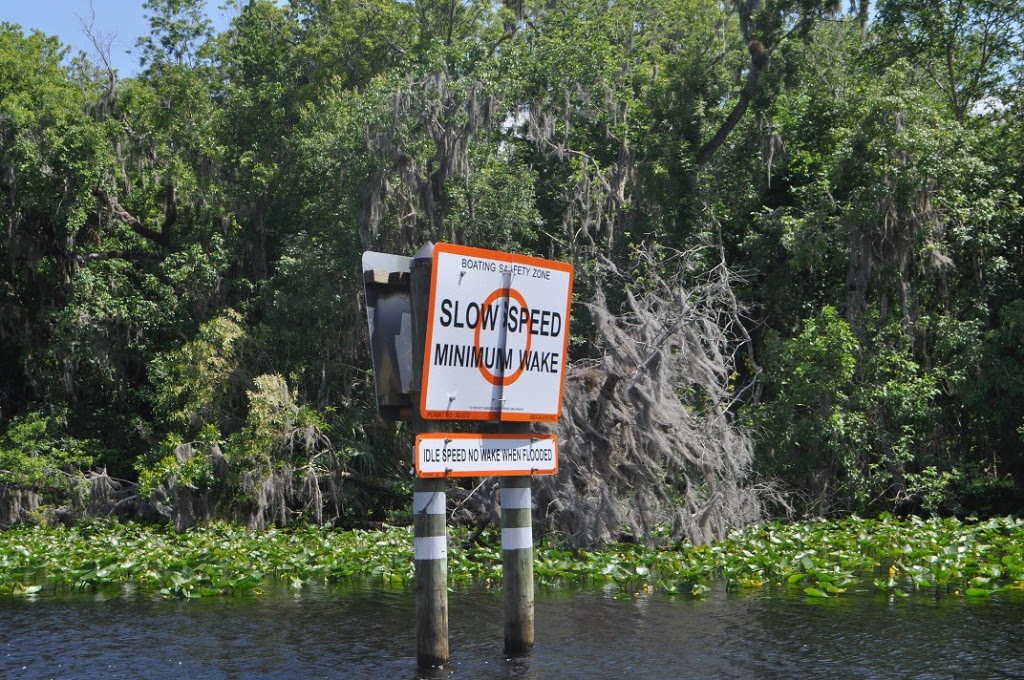
“Slow Speed, Minimum Wake”
You can move a bit faster here compared to the sign above and create a small wake. However, you should move cautiously.
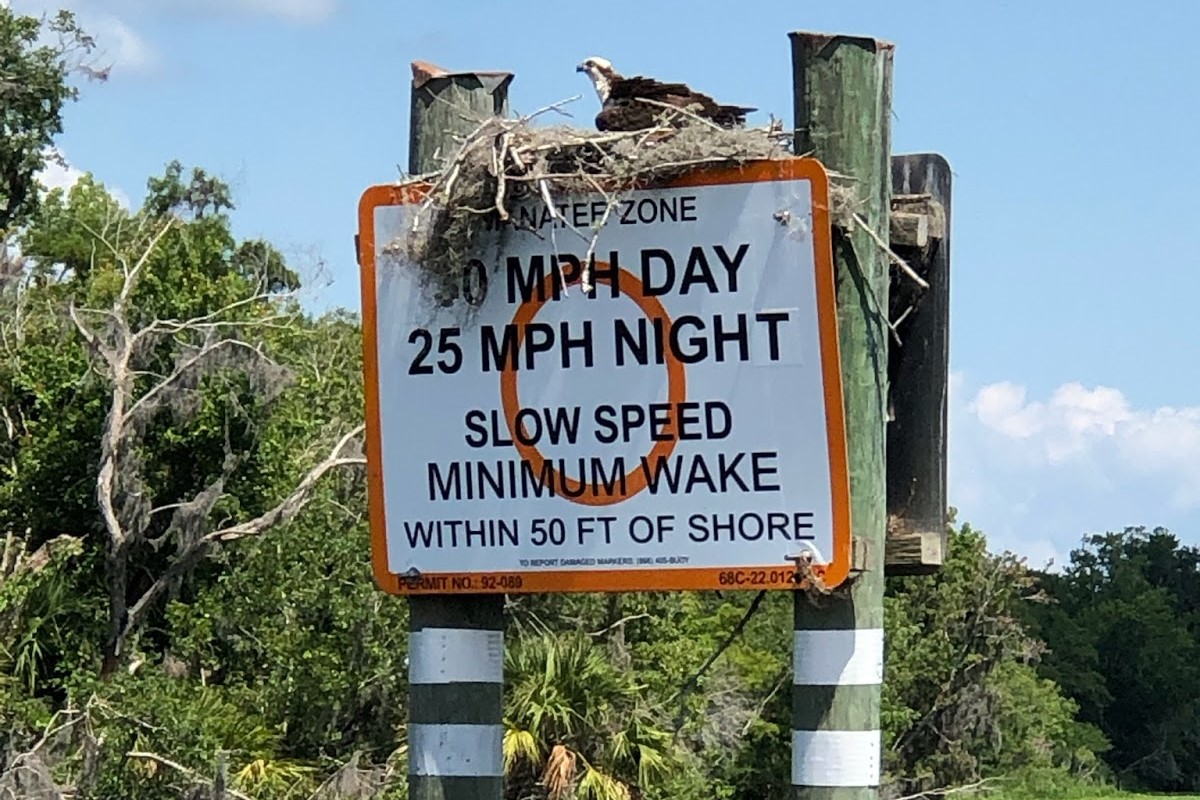
“Maximum 25 mph and 35 mph Speed Zone”
Essentially the equivalent of a school zone on the water. In other words, take care to not exceed the posted limit.
“Vessel Exclusion Area”
Marked with a vertical diamond shape with a cross in the center. Essentially, this indicates boats aren’t permitted here and are typically posted to inform boaters of an area designated for swimming.
“Manatee Zone”
Designed to alert boaters to slow down in areas where endangered manatees congregate. The words “Manatee Zone” are typically placed above a “Slow Speed, Minimum Wake” sign to make boaters aware of the big, lovable sea cows. Most often, there are stand-alone signs warning boaters to watch for these aquatic mammals.
For complete details, read our blog on the Boating Signs of the St. Johns River to familiarize yourself with the appropriate signage.
St. Johns River Safety Don’ts
Don’t:
- Anchor your vessel in the river’s navigation channel or otherwise obstruct boat traffic.
- Moor or attach your boat to a buoy or navigational aid or sign.
- Move, displace or tamper with any navigational aid or sign.
- Obstruct a pier, wharf, boat ramp or access to any public facility.
Boat Rentals on the St. Johns River
At Castaways on the River, we offer boat rentals at our Lake County location in Astor, FL. Looking to stay awhile? Rent a cottage or motel room today right on the St. Johns River.
Share your Tips on How to Navigate the St. Johns River!
After all, we want your input! Do you have tips on how to navigate the St. Johns River? Leave a comment below. Also, you can also follow us on Facebook, Instagram and Twitter. Don’t forget to tag us! We’d love to hear from you on social!
blog comments powered by Disqus